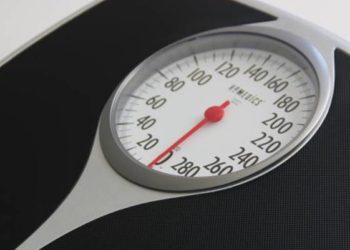Psychosocial, behavioral and clinical correlates of children with overweight and obesity
1. When compared with overweight and non-severe obesity among adolescents, severe obesity was associated with higher rates of eating when bored, decreased participation in sports and activities, and higher levels of stress.
2. Median hs-CRP, as well as prevalence of asthma, depression, and obstructive sleep apnea were elevated among adolescents with severe obesity.
Evidence Rating Level: 2 (Good)
Rates of obesity (≥95th percentile of a sex-specific BMI) and severe obesity (≥120% of 95th percentile of a sex-specific BMI) among children are steadily increasing in the United States. Severe obesity, in particular, increased from 4.0% between 1999 and 2000 to 6.0% between 2015 and 2016, with the highest prevalence (7.7%) seen among adolescents ages 12 to 19 years. Children and adolescents with severe obesity are at an increased risk for abnormal cardiovascular risk factors, asthma, depression, anxiety, and poor psychosocial wellbeing. This cross-sectional cohort study involving 105 children aimed to identify the factors vis-à-vis psychosocial, behavioral, and clinical metrics separating adolescents with severe obesity (n = 54, M age = 17.06 years, 40.7% male) from those with non-severe obesity (n = 31, M age = 14.40 years, 38.7% male) and overweight (n = 20, M age = 14.40 years, 35.0% male). Across the weight categories, median total body fat was shown to significantly increase and correlate strongly with BMI (r = 0.76, p ≤0.001). Among participants ≥13 years with obesity, eating when bored was more frequently reported compared with participants with overweight (p = 0.022). Participants with severe obesity were more likely to report not engaging in sports or other organized activities (p = 0.044). The study revealed no correlation between BMI and total cholesterol (r = -0.054, p = 0.588), LDL-C (r = 0.078, p = 0.432), or triglyceride levels (r = 0.161, p = 0.102). However, comparison with HDL revealed an inverse relationship (r = -0.352, p <0.001). Additionally, a strong difference between groups was observed for hs-CRP levels, with median hs-CRP among those with severe obesity 3 to 4 times high than those with overweight or non-severe obesity (p <0.001); this exceeded the cutoff (3.4 mg/L) for an elevated risk of cardiovascular disease. Severe obesity was associated with significantly higher levels of asthma (p = 0.007), depression (p = 0.02), and obstructive sleep apnea (p = 0.04). Finally, subjects with severe obesity reported higher median stress levels (p = 0.035). This study re-emphasizes the importance of weight control as an important lifestyle factor, and highlights some of the health behaviors and risks associated with severe obesity among adolescents which may provide avenues for future health promoting interventions.
Click to read the study in BMC Pediatrics
Image: PD
©2020 2 Minute Medicine, Inc. All rights reserved. No works may be reproduced without expressed written consent from 2 Minute Medicine, Inc. Inquire about licensing here. No article should be construed as medical advice and is not intended as such by the authors or by 2 Minute Medicine, Inc.







